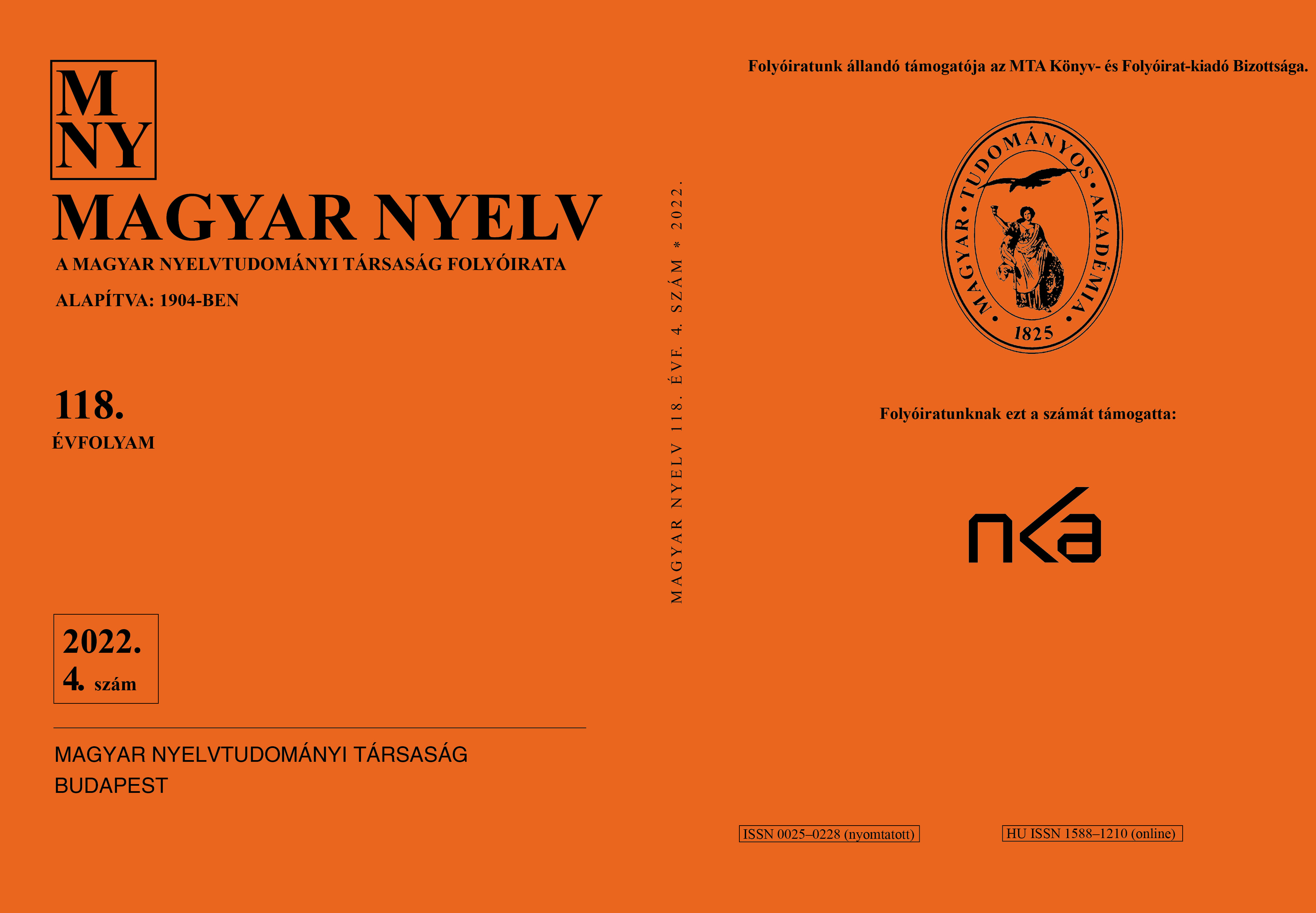Why Tisias did not pay Corax for rhetoric studies?
On the beginnings of the history of the theory of rhetoric
DOI:
https://doi.org/10.18349/MagyarNyelv.2022.4.489Keywords:
Corax, Tisias, history of rhetoric, theory of argumentation, parts of speechAbstract
This paper discusses the history of rhetoric and takes us back to the 5th century BC. According to tradition, the first rhetorical school was established by Corax. The paper does not really focus on the historical fact of establishment, but rather examines the first rhetorician’s theoretical work, which has not survived, but was referred to by antique sources. From a practical point of view, the paper discusses the argumentation of Corax’ famous debate with his pupil, Tisias. The description of Corax, missing from the Hungarian literature on the history of rhetoric so far, takes into account the previous conclusions of international studies, in addition to these aspects.
Downloads
Published
Issue
Section
License
Copyright (c) 2022 Márton Hoványi

This work is licensed under a Creative Commons Attribution-NonCommercial-NoDerivatives 4.0 International License.
Magyar Nyelv is a Diamond Open Access periodical. Documents can be freely downloaded and duplicated in an electronic format, and can be used unchanged and with due reference to the original source. Such use must not serve commercial purposes. In the case of any form of dissemination and use, Hungarian Copyright Act LXXVI/1999 and related laws are to be observed. The electronic version of the journal is subject to the regulations of CC BY-NC-ND (Creative Commons – Attribution-NonCommercial-NoDerivatives).
The journal permits its authors, at no cost and without any temporal limitation, to make pre-print copies of their manuscripts publicly available via email or in their own homepage or that of their institution, or in either closed or free-for-all repositories of their institutions/universities, or other non-profit websites, in the form accepted by the journal editor for publication and even containing amendments on the basis of reviewers’ comments. When the authors publicize their papers in this manner, they have to warn their readers that the manuscript at hand is not the final published version of the work. Once the paper has been published in a printed or online form, the authors are allowed (and advised) to use that (post-print) version for the above purposes. In that case, they have to indicate the exact location and other data of the journal publication. The authors retain the copyright of their papers; however, in the case of an occasional secondary publication, the bibliographical data of the first publication have to be included.



